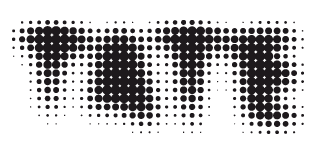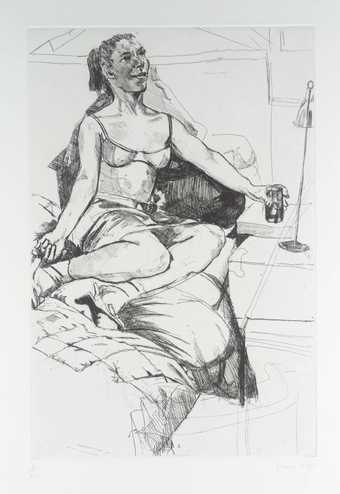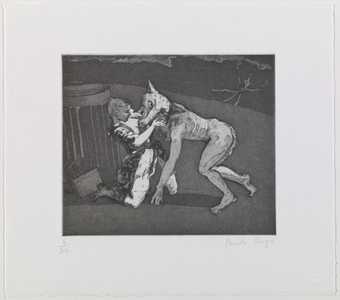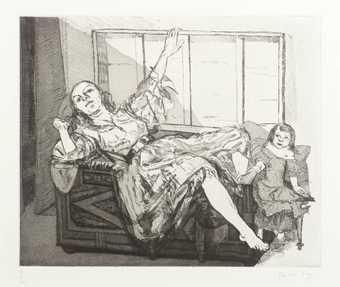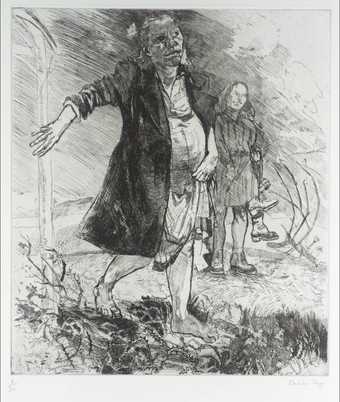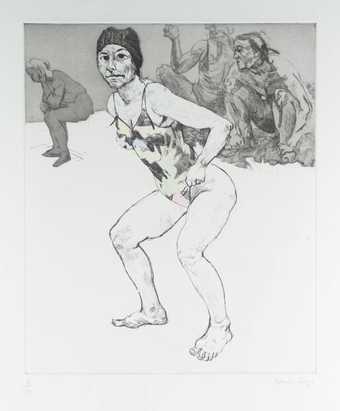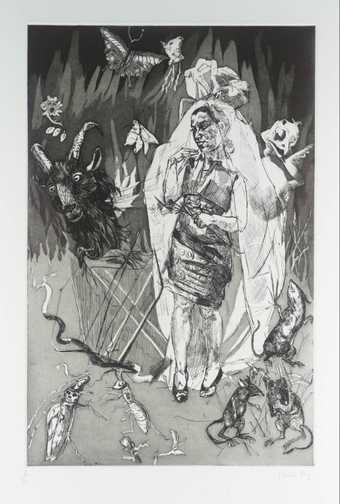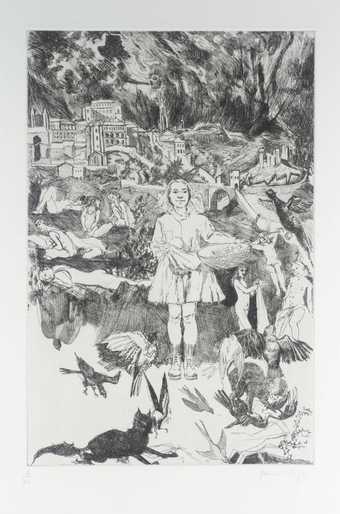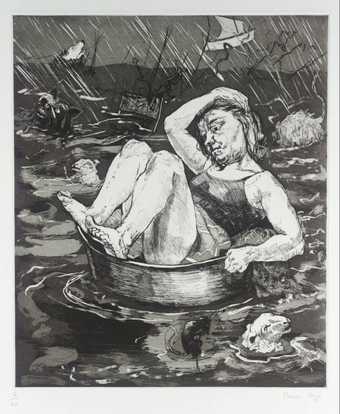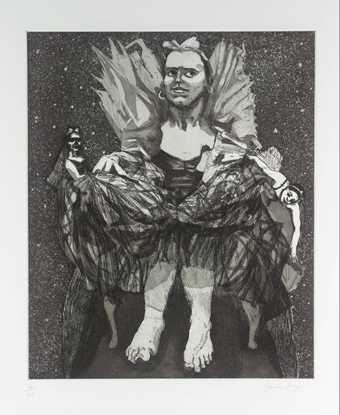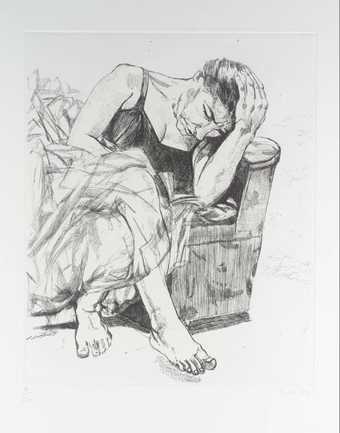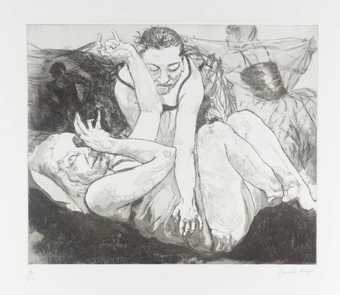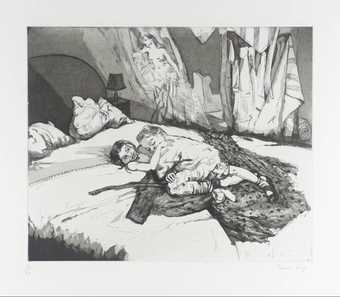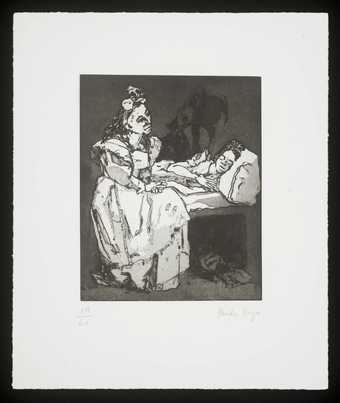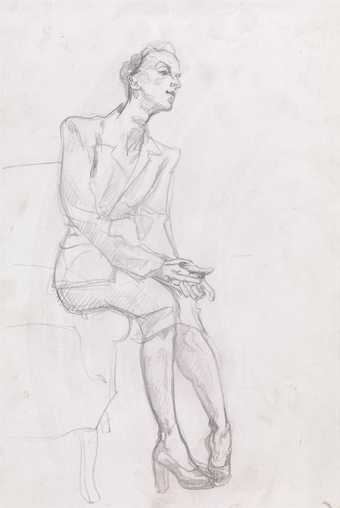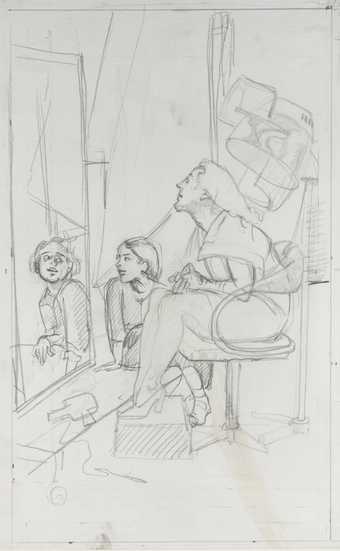Sorry, no image available
Prints and Drawings Room
View by appointment- Artist
- Paula Rego 1935 – 2022
- Part of
- Abortion Series
- Medium
- Etching on paper
- Dimensions
- Image: 200 × 295 mm
- Collection
- Tate
- Acquisition
- Presented by the artist 2002
- Reference
- P20235
Summary
This etching is one of a series of powerful works the artist made on the subject of abortion. The prints were produced in an edition of seventeen; Tate owns one of two sets of artist’s copies of seven of them. In addition to the etchings, Rego made a number of drawings and paintings, including the large scale Triptych, 1998 (Marlborough Fine Art, London). Each of the images shows a young woman alone in a room either during or immediately after an abortion.
Rego made these images in response to a referendum on abortion that took place in her native Portugal on 28 June 1998. Portugal, a predominantly Catholic country, has restrictive laws on abortion, allowing it only in specific cases: danger to the life of the mother, incurable illness of the foetus or if the pregnancy was the result of rape. This conservative stance is historic, dating back to the criminalisation of abortion under President António de Oliveira Salazar, whose dictatorship ran from 1932-68. In 1998 a proposal to liberalise the law was approved by Parliament, allowing termination on demand up to ten weeks. A coalition backed by the Church demanded a referendum on the issue. Just under 32% of the population voted, and the proposed change was defeated by less than two percentage points, with 50.92% voting against. In effect, this result blocked the passage of the law (see Lisboa, pp.143-5). Rego was dismayed by the outcome, and galvanized to make work in response. She has said, ‘I got so angry because I’d seen it all in Portugal – the suffering that went on when abortion was totally illegal. It was mind-boggling’ (quoted in ‘Paula Rego interviewed by Edward King, February 2001’, Celestina’s House, p.11).
The women Rego depicts in the series are in domestic surroundings, suggesting that theirs are illegal backstreet abortions. Their bodies and faces are contorted in pain but the women remain stoic and strong, defiant in their right to choose to terminate their pregnancies regardless of whether the church and state approve. Rego emphasises the fact that each woman is alone, framing each one starkly and keeping additional visual information to a minimum. The focus of these images is the women’s physical and mental anguish. Rego avoids sensationalism by declining to display blood and gore. She said, ‘I tried to do it full frontal but I didn’t want to show ... anything to sicken, because people wouldn’t look at it then. And what you want to do is make people look ... make it agreeable, and in that way make people look at life’ (quoted in Celestina’s House, p.11). Her project was directly political and her intention from the outset was to exhibit these images in Portugal. Etchings, pastels and drawings on the subject were shown at the Fundação Calouste Gulbenkian in Lisbon in 1999 and images from the series have since been used to illustrate press articles about the issue of abortion.
This etching is a study after the middle panel of Triptych, 1998 and also relates closely to Untitled I, 1999 (Tate P20234). It shows a woman lying on a bed, her legs bent at the knees and parted. As in Untitled I, her dress is hitched up underneath her, revealing her sturdy thighs. In this image, however, the woman stares out of the picture, addressing the viewer directly with half-hooded, accusatory eyes. The image is a devastating inversion of the traditional reclining female nude. Lying on a bed with her legs spread, this woman is not an erotic object but a defiant subject. She keeps her clothes on, maintaining what dignity she can. Her unflinching gaze puts the viewer in the position of the man who, although partly responsible for the pregnancy, by virtue of his gender takes none of the physical burden of its termination. Her stare may also be meant for those who maintain the status quo by making abortion hard to procure legally and easy to dismiss morally.
Further reading:
Fiona Bradley and Edward King, Paula Rego: Celestina’s House, exhibition catalogue, Abbot Hall Art Gallery, Kendal, 2001, reproduced no.11 in colour.
Fiona Bradley, Paula Rego, London, 2002.
Maria Manuel Lisboa, Paula Rego’s Map of Memory: National and Sexual Politics, Burlington, Vermont, 2003.
Rachel Taylor
November 2003
Does this text contain inaccurate information or language that you feel we should improve or change? We would like to hear from you.
